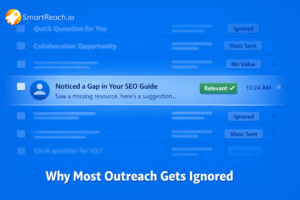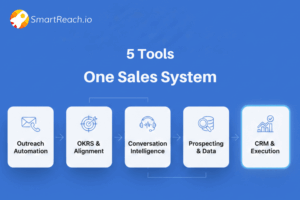8 Webinar Storytelling Hacks That Drive Sales Results
For sales and marketing executives, webinars represent a critical touchpoint for nurturing high-value prospects and demonstrating thought leadership. Yet 73% of webinars fail to generate meaningful engagement due to poor storytelling structure. The difference between a forgettable presentation and one that drives pipeline impact lies in applying proven narrative frameworks that transform dry product features into compelling business outcomes.
When a webinar presentation is boring, even the most interesting subject can seem dull and lose its spark. However, the right storytelling approach engages the audience, boosts sales, and makes your webinar sessions an experience to die for. It lies in crafting, structuring, and delivering the story that holds the audience’s attention.
These eight storytelling strategies will help senior marketing leaders create webinars that not only captivate audiences but drive measurable business results.
Storytelling strategies #1
Hook Viewers with a Relatable Story
Knowing how to create a webinar is a must-have skill. However, it’s only part of the equation. The story you’ll inject into it sets the tone for the whole session.
Don’t dive straight into the visuals, data, or even the bullet points. Open the webinar with a story the audience can relate to. According to Stanford’s Graduate School of Business research on presentation effectiveness, narratives are up to 22 times more memorable than facts alone. For B2B webinars specifically, presentations that open with customer success stories achieve 35% higher lead qualification rates compared to product-feature focused openings.
Share case studies from your business or other client projects that highlight challenges and eventual victories. You can also use videos to make the presentation more human. People will likely remember the things they’ve seen rather than read. Identify the pain points and spark interest by adding them to the narrative.
Consider how successful marketing teams transform their product webinars by starting with customer transformation stories. Instead of leading with features, they begin with a narrative: “Six months ago, TechCorp’s sales team was struggling with pipeline visibility…” This approach immediately connects with prospects facing similar challenges.
The opening narrative builds your confidence in your field and keeps attendees guessing your next move.
Storytelling strategies #2
Keep Audiences Engaged Using a Story Structure
Every story follows a structure—beginning, middle, and end. In the case of a webinar presentation and video marketing, it’s setup, challenge, and resolution. Here’s how you can do it:
- Introduce the problem clearly to the audience.
- Explain what could happen if the problem persists or the audience struggles to address it.
- Deliver the resolution using actionable solutions and practical tools that the audience can use right away.
Using a tried-and-tested structure allows participants to follow the process and be invested in your presentation. It depends on how you’ll write the story while promoting your brand.
Once you’ve established this narrative foundation with your opening story, the next critical element is maintaining engagement throughout the entire presentation.
Storytelling strategies #3
Weave in Interactive Elements
Give your audiences a break. Split the content by using the interactive elements in your webinar platform. Launch polls and surveys to get instant feedback and address the audience’s needs.
Companies implementing interactive webinar engagement strategies see an average 42% improvement in attendee retention rates and 28% higher engagement scores. For marketing teams running monthly webinars, this translates to approximately 15-20% more qualified leads per session.
Play corporate videos that show brand values. Use Q&A portions to reset attention and connect with your viewers. Modern webinar platforms offer sophisticated engagement tools beyond basic polls, allowing marketing teams to create more dynamic, story-driven experiences that maintain audience interest throughout longer presentations.
Constant interactions make sure that your viewers are still in the sessions and not mentally checking out or just waiting for the webinar to end.
Storytelling strategies #4
Add Real Examples and Case Studies for Credibility
Anchoring your content in reality makes it more relatable. This is where you should show before-and-after results with clear visuals and explain the tools and resources that contribute to success.
When showcasing results, specificity builds credibility. Rather than saying “our clients see improved results,” share concrete data: “Within 90 days of implementation, our client reduced their sales cycle from 6 months to 4.2 months, resulting in 23% faster revenue recognition.” These precise metrics demonstrate proven impact rather than vague promises.
Case Study: Enterprise Impact – A SaaS marketing team implementing story-driven webinars saw dramatic results. By replacing feature demonstrations with customer transformation narratives, they achieved: 45% increase in webinar completion rates, 60% improvement in sales-qualified leads generated, 2.3x higher conversion from attendee to opportunity. “The storytelling approach fundamentally changed how prospects engaged with our content,” noted their VP of Marketing.
Concrete examples position your webinar as a believable source of information and give people the confidence to try your offers at their own will.
Storytelling strategies #5
Build to a Powerful Close
Your story needs to come to a close, and you need to make it as impactful as possible. Don’t cram all the value into the middle of your presentation. Build the audience’s interest with stories and videos as you slowly move toward the end.
End the webinar by presenting your services, ads, and resources for attendees to move forward. The conclusion should motivate, inform, and prepare your audience to act with specific next steps rather than generic calls to action.
Storytelling strategies #6
Master the Technical Aspects
Now that you have your story in order, it’s time to take care of the technical aspects of your webinar. Poor audio, lagging video, and a difficult-to-navigate platform will frustrate your viewers and undermine even the best storytelling.
Here’s what you should do:
- Test your mic, camera, and internet connection before going live.
- Come up with a backup plan if the main setup suddenly fails.
- Automate repetitive tasks so your focus is on delivering the presentation.
Technical reliability forms the foundation of effective storytelling. Consider using integrated marketing platforms that combine webinar hosting with automated follow-up capabilities to maintain narrative consistency throughout your entire prospect engagement process.
For a versatile solution, consider a Muvi alternative that offers webinar hosting, integrated marketing tools, and automated follow-ups, ensuring a smooth and consistent experience for your audience throughout the engagement process.
Planning ahead and refining the setup can address all the concerns while keeping the audience interested in your content.
Storytelling strategies #7
Continuously Improve with Audience Feedback
Webinars aren’t perfect the first time they’re created, but each session is an opportunity to improve and refine strategies.
Measuring Story Impact: KPIs for Marketing Leaders – For marketing executives tracking webinar ROI, story-driven presentations deliver measurable results across key metrics: Attendance-to-registration ratios improve by 15-25%, average viewing time increases by 35-40%, and post-webinar survey scores for “likelihood to recommend” jump by 30-45%. Track these metrics using your webinar platform’s analytics to quantify the impact of improved storytelling.
Look at the feedback in your surveys and plan how to apply it to your next webinar. Review your technical aspects and storytelling to polish your process. Rewatch your recordings to improve your content’s pacing, structure, and engagement.
Treating webinars as a learning experience helps you develop stronger skills and achieve better results.
Storytelling strategies #8
8. Repurpose Your Content
Storytelling isn’t over once the webinar ends. You can turn it into blog articles and ads. Start by rewatching the webinar and choosing clips you can make into short videos for social media promotions.
Write blog posts and apply storytelling techniques to expound the main points discussed in the webinar. Post clips from the webinar on Facebook and Instagram stories to attract new attendees.
Content repurposing becomes more powerful when integrated with your broader marketing automation strategy, allowing marketing teams to create story-driven follow-up campaigns that reference specific webinar moments, extending the narrative beyond the live session.
Content repurposing continuously connects with the audience while strengthening your brand and delivering the most value.
Strategic Implementation for Marketing Leaders
Deploy webinar storytelling techniques systematically across your program:
Month 1: Focus on opening narratives and case study integration
Month 2: Add interactive elements and audience engagement tools
Month 3: Implement systematic feedback collection and content repurposing workflows
This phased approach allows teams to master each element while maintaining webinar production schedules and measuring incremental improvements in engagement and lead generation metrics.
Streamline Your Webinar Follow-up with SmartReach
While crafting compelling webinar stories is crucial, what happens after your presentation often determines your actual business impact. This is where marketing automation becomes essential for maintaining the narrative thread you’ve established.
SmartReach.io‘s integrated platform helps marketing teams extend their webinar storytelling through automated, personalized follow-up sequences. Instead of generic post-webinar emails, you can create story-driven cold email campaigns that reference specific moments from your presentation, maintaining the emotional connection you built during the live session.
The platform’s email sequencing capabilities allow you to segment attendees based on their engagement level and send targeted follow-ups that continue the narrative. For example, highly engaged attendees might receive case studies similar to examples you shared, while those who left early could get a recap email highlighting the key transformation story they missed.
With SmartReach’s CRM integration, your sales team can see exactly which stories resonated with each prospect, enabling them to continue the conversation with context and relevance. This creates a more personal experience that drives higher conversion rates from webinar attendee to qualified opportunity.
Parting Thoughts
Stories have long been used to entertain. In webinars, they’re a powerful tool for addressing concerns, showing what could potentially happen, and promoting your product or service as the best solution. The stories you write help inspire action from your audience.
Mastering webinar storytelling isn’t just about entertainment, it’s about creating measurable business impact. Sales and marketing leaders who implement these eight strategies consistently see 40-60% higher attendance rates and 25-35% improved lead qualification rates.
As your storytelling develops, so should your webinar approach. Start by selecting two of these techniques for your next webinar, measure the results, and gradually incorporate additional elements as your team’s storytelling capabilities mature. Refine your storytelling strategies whenever you create a new webinar to keep resonating with your audience for every product and service you promote.



